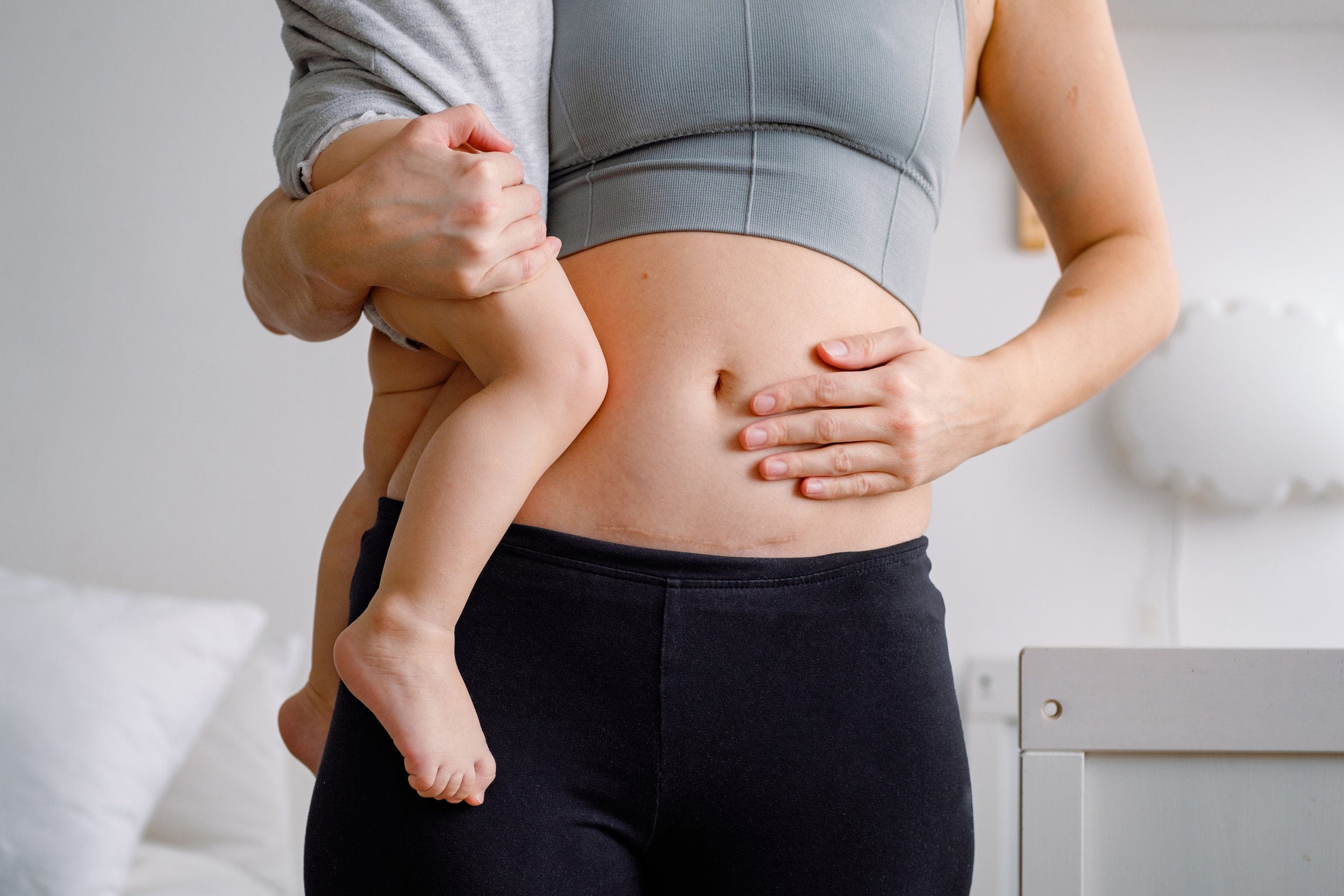5 Tips to Help You Recover From Caesarian (C-Section) Delivery
Written by Susan Miller, PT, DPT, and originally posted on LotusCorePT.com.
For anyone who has experienced a caesarean (c-section) delivery, you have also experienced an incision into the abdominal wall. These scars are typically located horizontally above the pubic bone or vertically under your belly button. The incision moves through 6 different layers of the abdominal cavity with stitching performed at the uterus, sometimes rectus abdominis muscle (6-pack muscle) and skin. In the immediate weeks after delivery we can be unsure how to heal the scar and how to take care of your newborn with decreased abdominal strength.
1) It’s okay to touch your scar, or at least around your scar.
Your scar will take about 6-8 weeks to fully heal but you can help the healing process starting at 2-3 weeks. Your body needs time to allow the tissues to heal, come together, and form new skin. At the 2-3 week mark, you can provide light touch above and below the scar with gentle circles. Starting at 6-8 weeks and when cleared from your OBGYN, scar mobilization is indicated by performing direct pressure or massage onto the scar with skin rolling, circles, and moving the scar up and down.
2) My scar is sensitive! Use a tissue or t-shirt.
Scars can be very sensitive as new skin is forming. Instead of using the pad of your finger to touch around the scar and eventually on the scar, start with a tissue to sweep lightly around the scar or you can place your shirt between the scar and finger to lightly sweep over your scar.
3) To bind or not to bind?
Binders, high-waisted leggings or “Bengkung belly binding” can provide a nice little hug you need to help you take care of your baby in those initial weeks. Proceed with caution: you want the feeling of a hug, not a big squeeze that causes pressure on your pelvic floor muscles.
4) Modify your movements early on.
You wouldn’t go throw a baseball right after shoulder surgery…right? But you still need to take care of your newborn so let’s try to limit or modify your movements in the immediate weeks of recovery. Remember, you just had major abdominal surgery!
Modified movements can help protect the scar during your healing phase and reduce unnecessary pressure throughout the abdominal wall and pelvic organs/floor.
Below are some examples:
1) Log roll when getting in and out of bed.
2) Bring the baby to you when you are breastfeeding.
3) Feel a sneeze or cough coming—grab a pillow to place on your lower abdominals.
4) When picking up your baby, exhale out (like blowing through a skinny straw) to engage the abdominal wall to engage.
If you have a partner, family member, or friend, ask them to do the heavy lifting. If these options are not available to you, only perform strenuous activities that are a must.
Walking is encouraged to get the blood flow moving to improve healing, although be careful of returning to high intensity exercise too early. While you may be cleared to return to activity from your OBGYN, your muscles may not be ready for the demand that is required for high intensity exercise.
5) It is never too late to work on your caesarean scar or recovery from a caesarean delivery!
Whether you had a baby 2 weeks ago or 20 years ago, scars have the opportunity to be treated and mobilized. A lot of times your persistent back pain that started after your caesarean birth can be rooted in the scar itself.
A pelvic floor physical therapist can help you as early as 2-3 weeks postpartum from a caesarean delivery.
Schedule an appointment with Lotus Core Physical Therapy to help address any questions or concerns.


